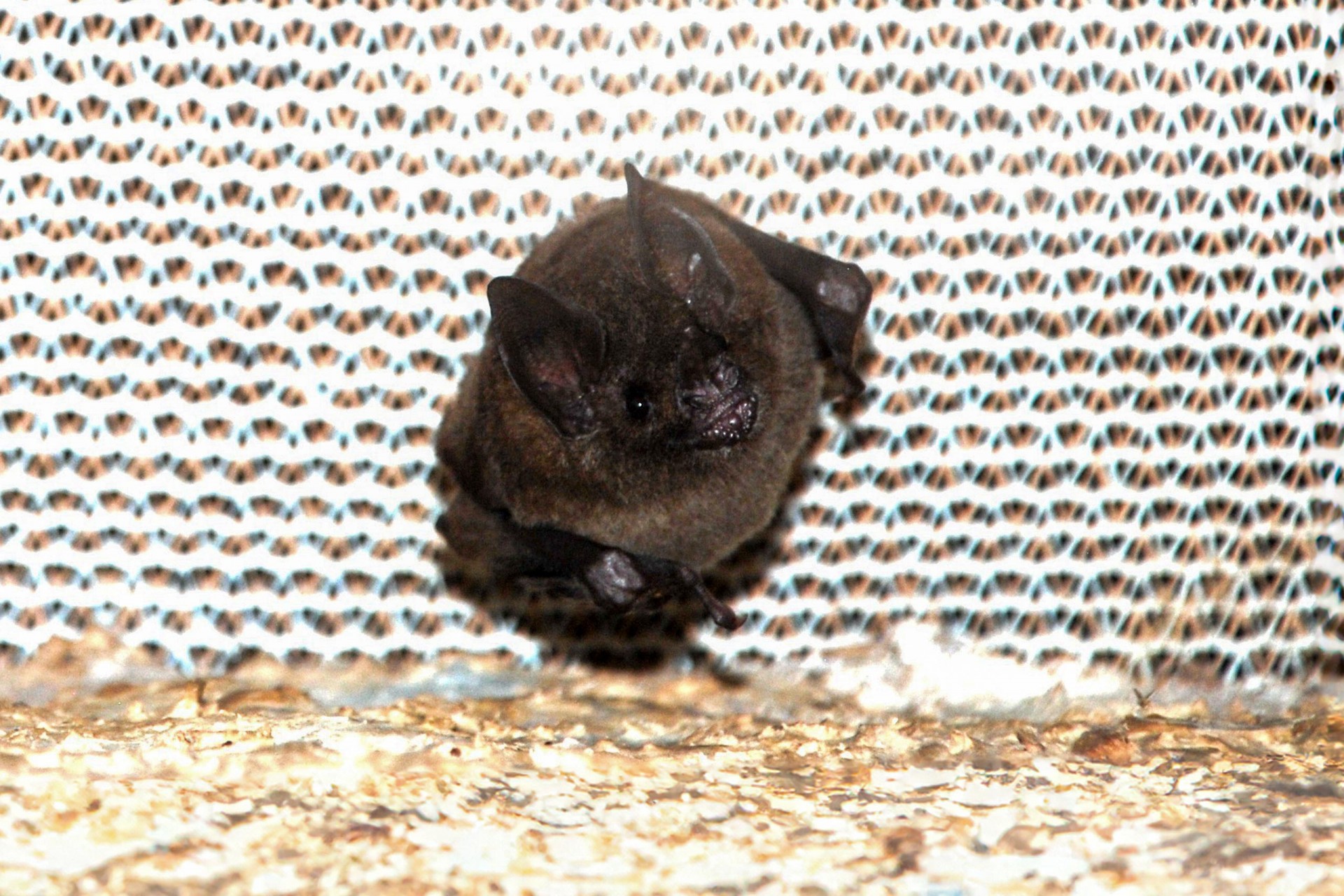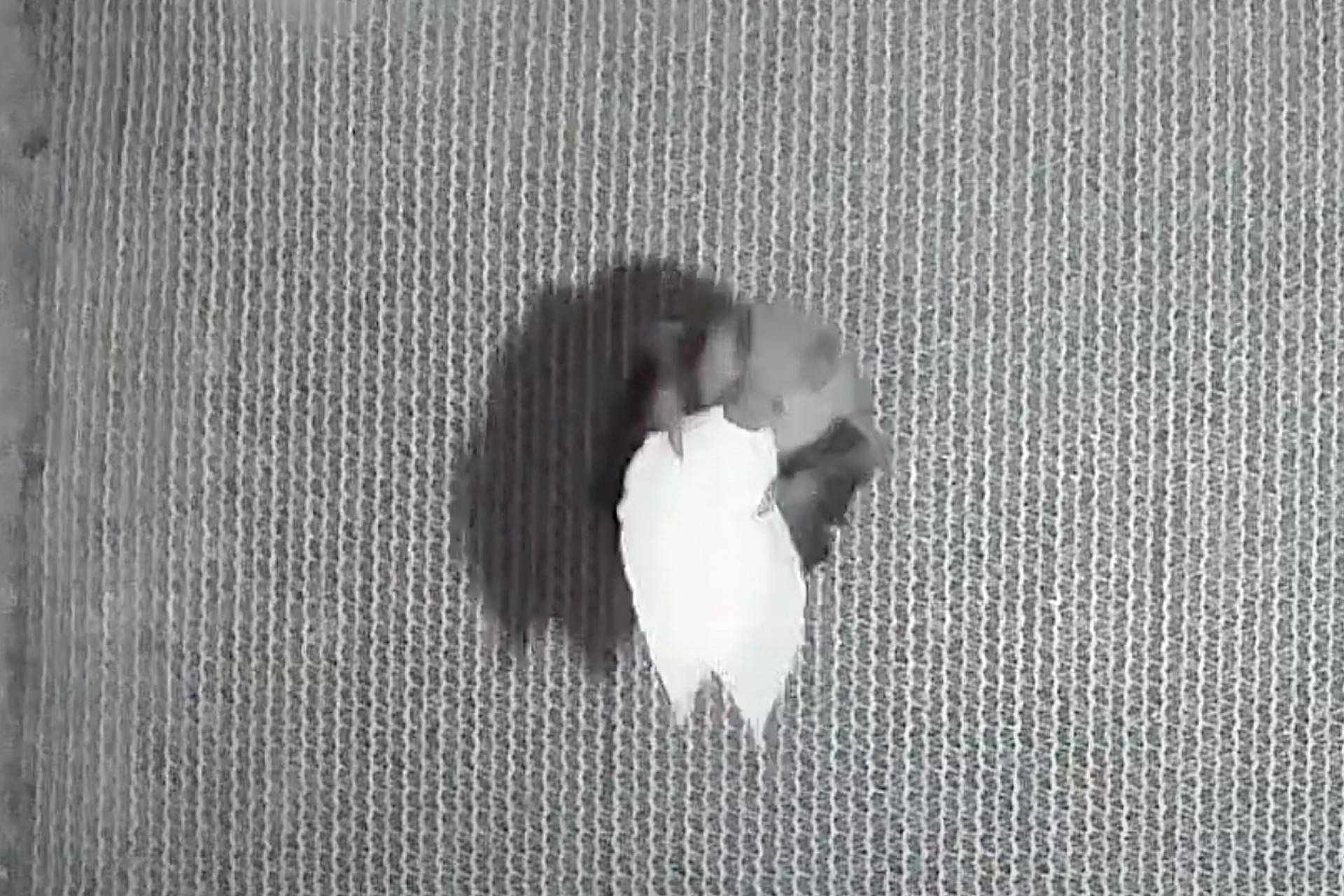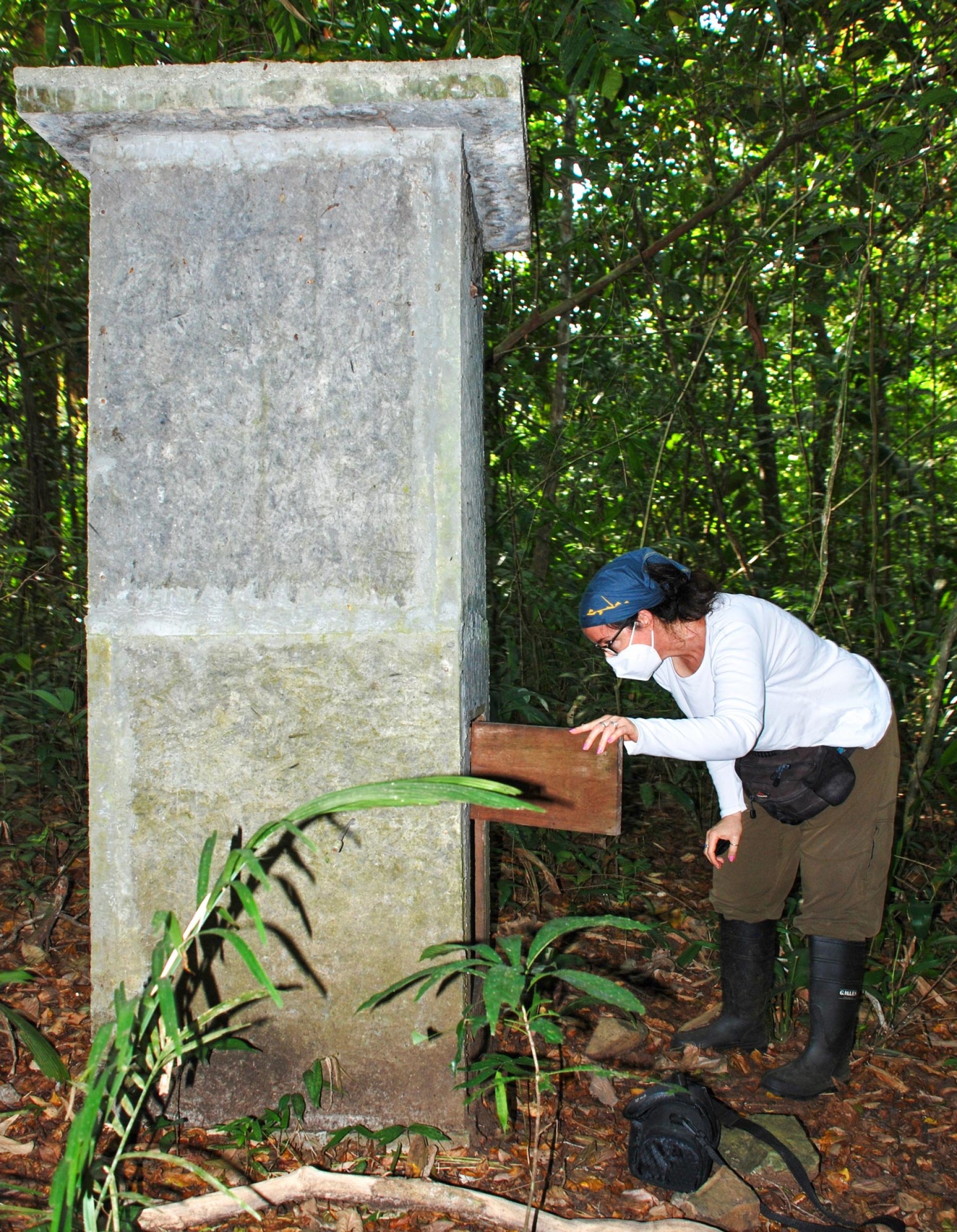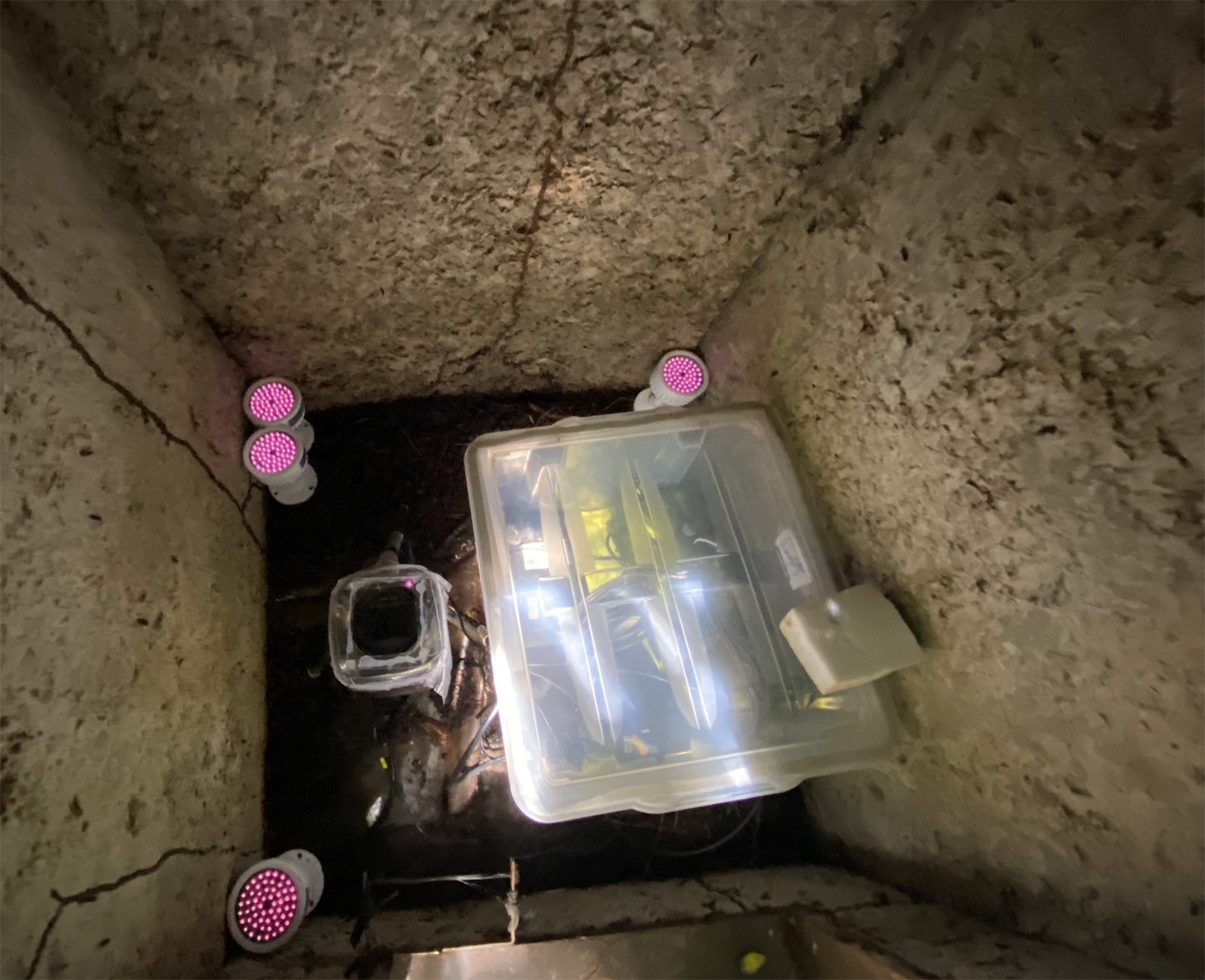Bat Salad
True Folivory in Bats
Bats are known to chew and spit out leaves, like humans chew and spit out tobacco or coca, but this is the first continuous recording of a bat eating entire leaves.
Tropical bats eat everything from fruit to frogs…and even each other, but when researchers at the Smithsonian Tropical Research Institute put infrared video cameras inside artificial bat houses in Panama’s Soberanía National Park, one of their most surprising findings was the discovery that Seba’s short-tailed bats, Carollia perspicillata, are able to consume entire leaves.
“It was our job to watch almost 300 hours of video from these artificial bat houses located in natural conditions,” said Mariana Muñoz-Romo, former post-doctoral fellow at STRI and National Geographic Explorer. “Most of the time the bats sleep or groom each other, but it’s worth the effort because occasionally we discover a behavior that no one has ever seen before! I really couldn’t believe my eyes—this was supposed to be impossible.”
Portrait of a Seba’s short-tailed bat, Carollia perspicillata.
Credit: Mariana Muñoz Romo
This new, groundbreaking observation, published in the journal Behaviour, is the first convincing evidence that a bat can consume entire leaves. The authors’ careful review of the subject shows that in previous reports of bats eating leaves, the bats just chewed the leaves and spit them out, which is considered ‘leaf fractionation’, not true folivory. STRI staff scientist Rachel Page explained, ‘For decades, researchers thought that bats don’t swallow whole leaves because they need to be light to fly, and thus could not invest in heavier, more complex digestive systems required for consuming the fibers found in whole leaves. What Mariana observed completely changes our understanding what is possible in bat leaf consumption.’
Seba’s short-tailed bat consuming eating leaves. Still from video.
Credit: STRI BatLab
Why bats consume leaves remains a mystery. Bats may chew leaves to extract vitamins, micronutrients, or protein – or to self-medicate. In other reports to date, the bat spits out a pellet—much like people do when they chew tobacco, coca or betel leaves. But this case was different:
“This bat, Carollia perspicillata, flew into the roost holding two leaves shortly after 11 pm on a November night, and proceeded to eat them all,” said Mariana. “It took more than 13 minutes. I could clearly hear it chewing in the video recording. Then, rather than leave, it just hung out for 3 hours. And it pooped 10 times.” These details are important – the bat did not vomit up the leaves, nor it did not orally eject them in another way. Instead, the bat showed every sign of fully digesting these two leaves – an observation that changes our understanding of what the bat digestive system is capable of.
Mariana Muñoz-Romo checking an artificial bat roost
Credit: Gregg Cohen
In addition to this discovery, the use of artificial roosts has already led to NY Times story about the underdog bats squabbling – and prevailing – against potential predators. Researchers expect that more surprises are in store based on video recordings of bats in artificial roosts, which offer an extraordinary window into natural behavior as it unfolds in the wild, a significant step toward rewilding the field of animal behavior research in the tropics.
The team thanks Detlev Kelm sharing his artificial roost design. This study was funded by generous donations from Pat and David Jernigan and the FaB 5 Fund, and a National Geographic Explorer Grant to Mariana Muñoz-Romo.
About the Smithsonian Tropical Research Institute
Headquartered in Panama City, Panama, STRI is a unit of the Smithsonian Institution whose mission is to understand tropical biodiversity and its importance to human welfare, train students to conduct research in the tropics, and promote conservation by increasing public awareness of the beauty and importance of tropical ecosystems. Watch STRI’s video and visit the institute on its website and on Facebook, X-Twitter and Instagram for updates.
Reference:
Mariana Muñoz-Romo, Gregg Cohen and Rachel A. Page. 2025. Actual folivory in bats: whole leaves as a formerly dismissed trophic item and a potential avenue for self-medication. Behaviour DOI:10.1163/1568539X-bja10297.





